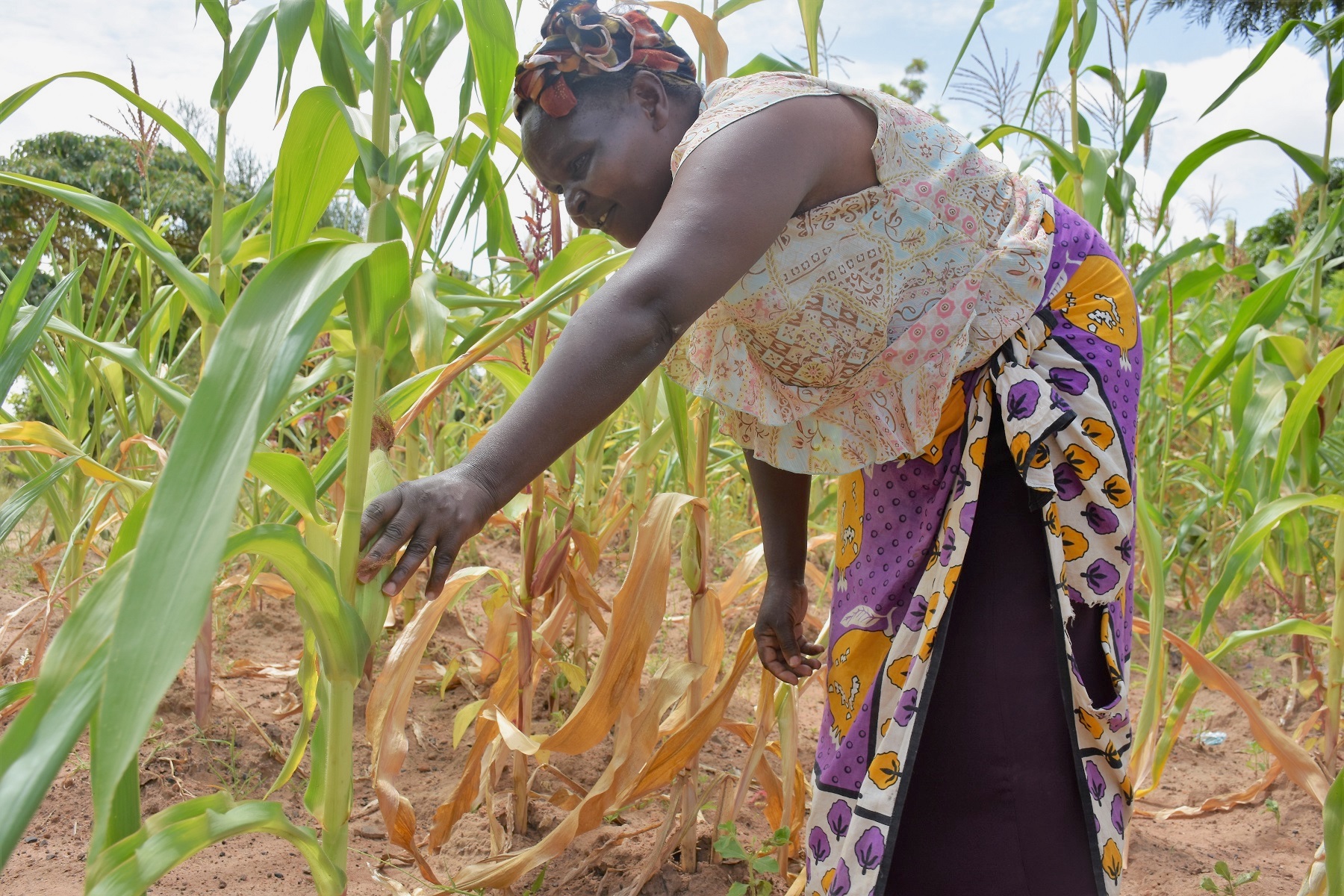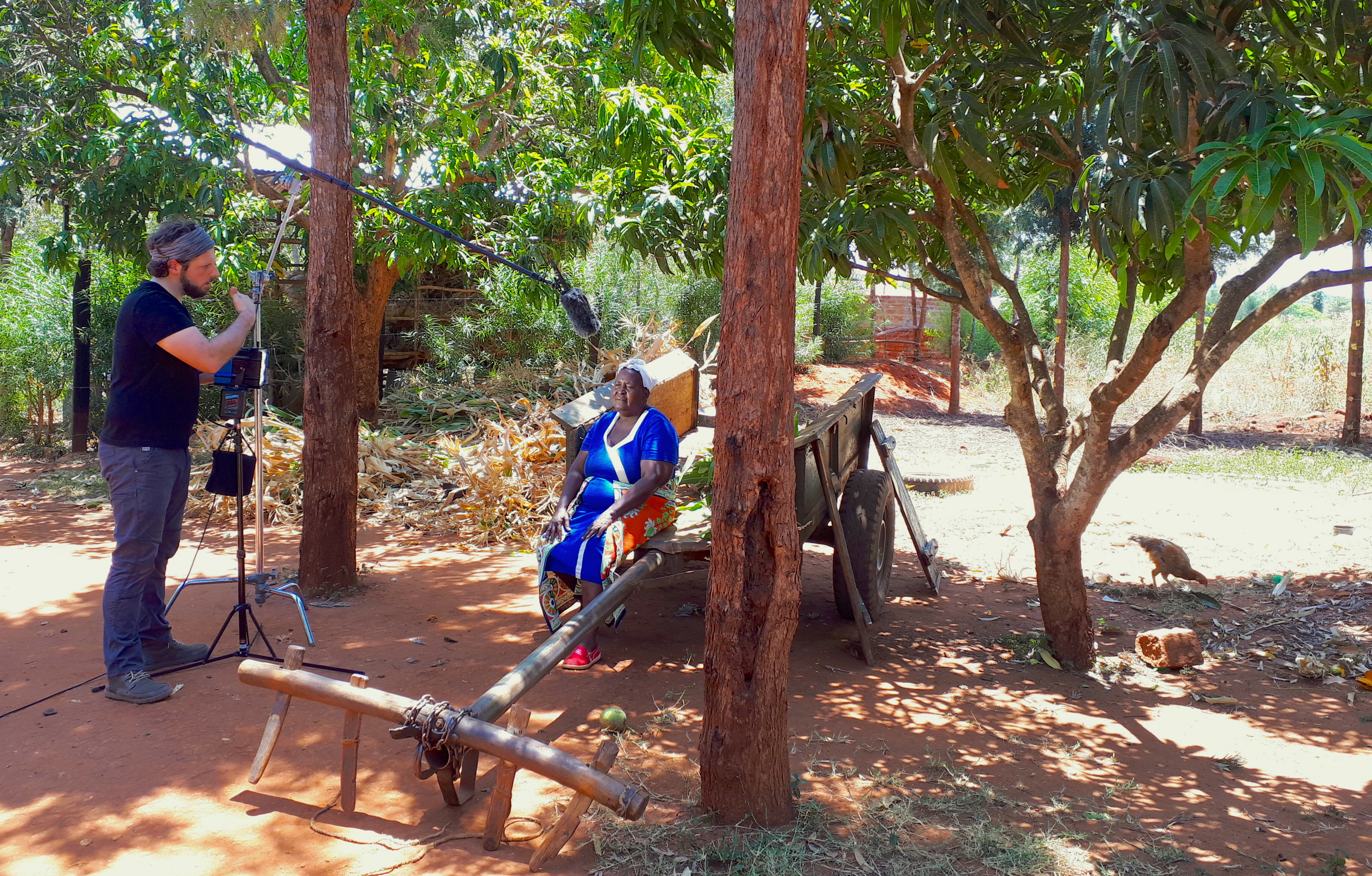Tabitha Kamau, 29, is scrutinizing a maize demonstration plot on which 12 different varieties were planted in November 2018. “What I am looking for is a maize variety that produces a lot, even when there is scarce rainfall,” says the single mother of three, who lives in Katheini, in Kenya’s Machakos County, on a quarter of an acre of land.
Together with 350 other smallholder farmers from Katheini and neighboring villages, Kamau is assessing the maize crops and ranking them based on her preferred traits.
Like her peers when asked what makes a good maize variety, she gives high scores to drought-tolerant varieties and those that can yield large and nicely filled cobs despite the dry spell that has affected the area over the last two months.
For five years, Kamau has been planting KDV4, a drought-tolerant open pollinated variety on the family land and another piece of leased plot. This early variety matures in 100 to 110 days and is adapted to dry mid-altitude conditions.
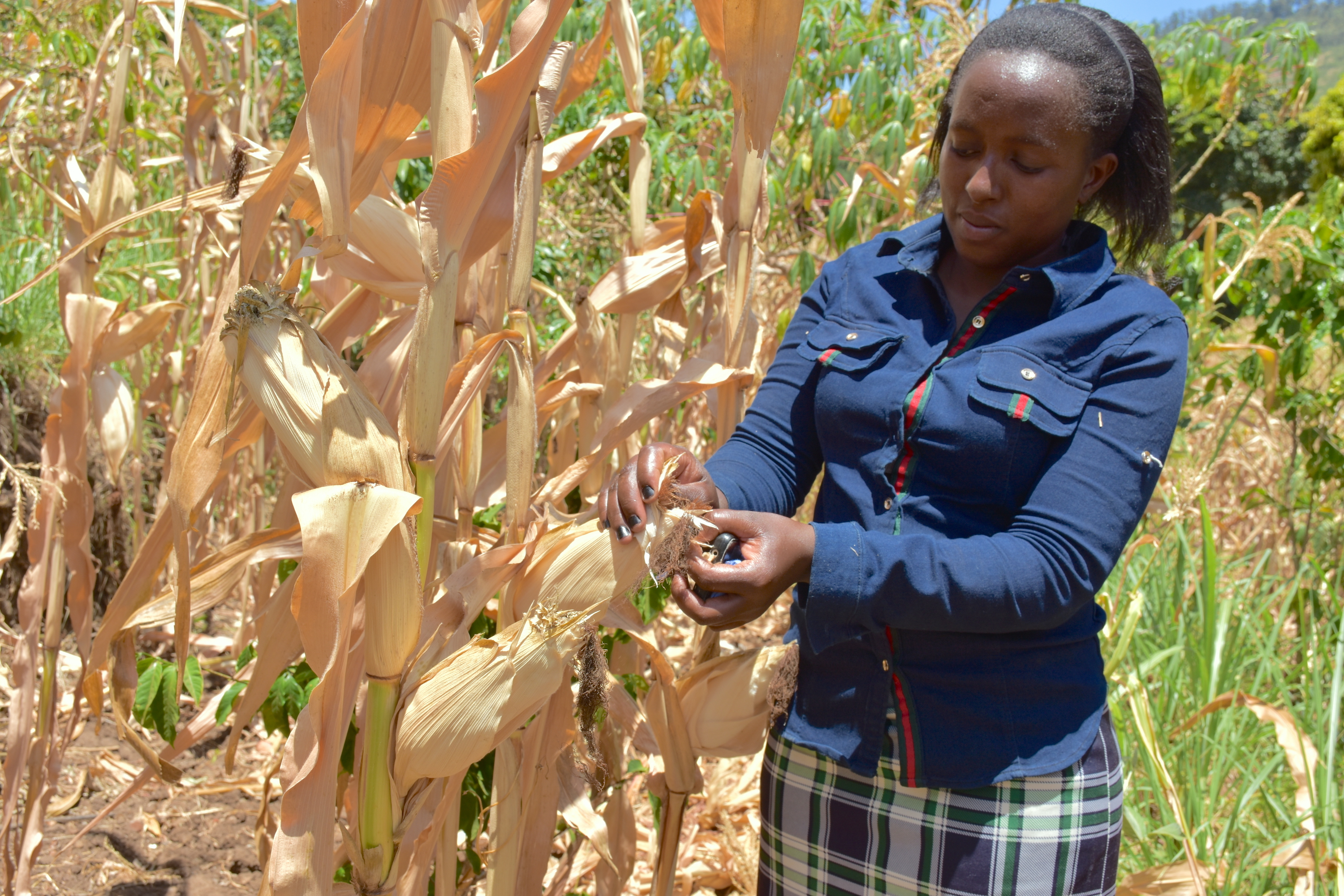
KDV4 was released by the Kenya Agricultural & Livestock Research Organization (KALRO) using the International Maize and Wheat Improvement Center (CIMMYT)’s germplasm. It is currently marketed by Dryland Seed Limited and Freshco Seeds, targeting farmers in the water-stressed counties of Kitui, Machakos and Makueni, in the lower eastern regions of Kenya.
The early maturing of varieties like KDV4 presents a good opportunity for its adopters, says Kamau. “If I am able to harvest in three and a half months or less, compared to four months or more for other varieties, I can sell some grain to neighbors still awaiting their harvest who want to feed their families.”
“I heard of new varieties that can germinate well and produce lots of leaves,” explains Catherine Musembi. This farmer from Kivaani looks for maize that performs well even under heat and drought. She likes maize plants with high biomass, as the foliage is used to feed the family’s three cows and two goats.
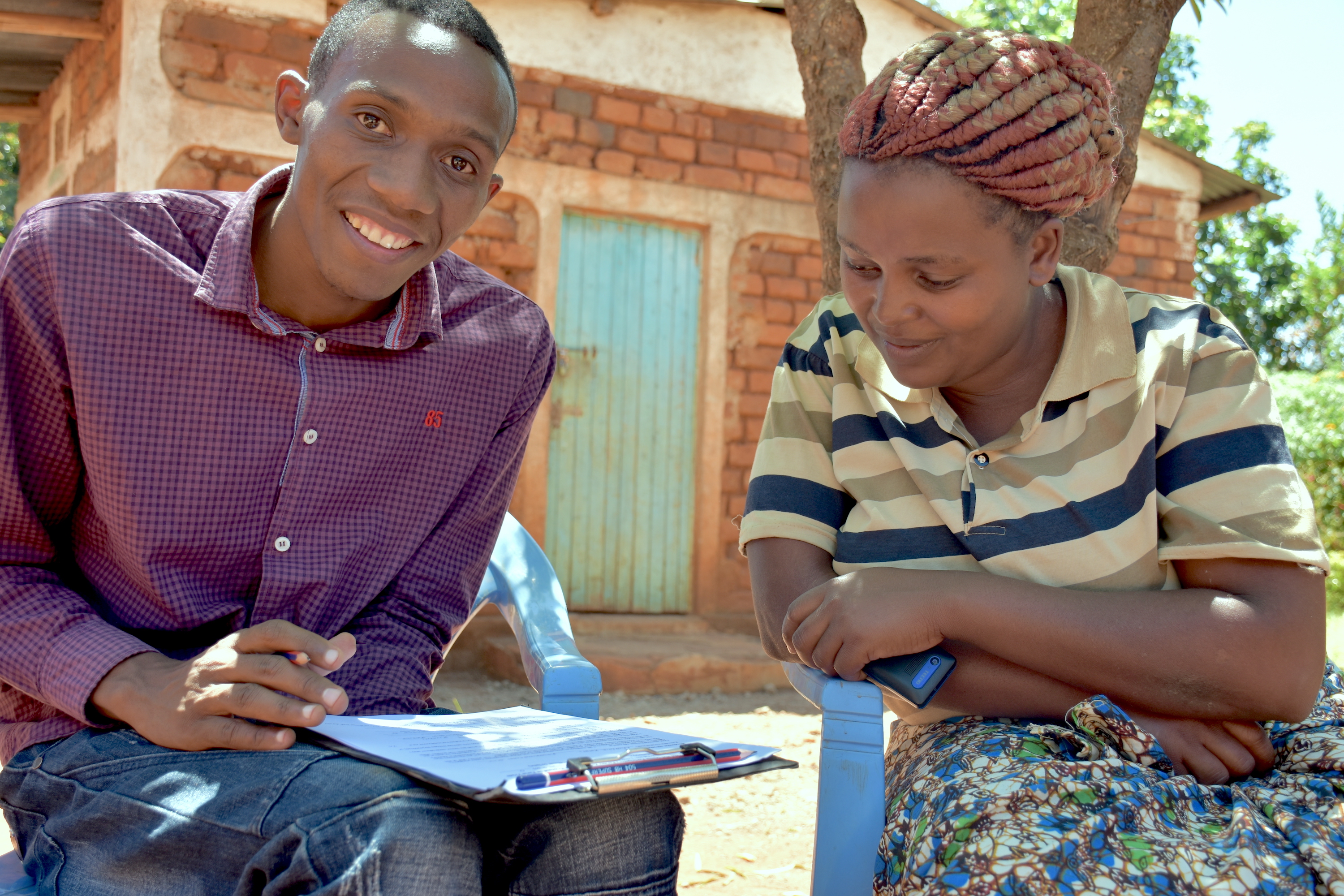
Farmers’ picks
The International Maize and Wheat Improvement Center (CIMMYT) has been undertaking participatory maize variety evaluations since 2016 in Kenya, Rwanda, Tanzania and Uganda. Every year, during the main maize growing season, researchers plant on-farm trials that can be evaluated by farmers.
Kamau and Musembi attended a selection trial in Machakos County, facilitated by a team from KALRO on February 18-19, 2019. This exercise was part of the 2018 mid-season evaluations, which were followed up by end-season assessments a month later.
Participatory farmer evaluations are used to give crucial feedback to CIMMYT’s maize breeding work. First, farmers get an opportunity to state what traits are important for them and rank them according to their importance. Then, participants evaluate varieties planted in the trial and give a score on individual trait and the overall performance for each variety planted. And they conclude the exercise by rating the best three plots.
In the drier eastern part of Kenya, farmers might be more interested in traits such as drought tolerance, early maturity and disease resistance. In central Kenya, where dairy farming is commonly practiced, a variety with more biomass could be preferred.
“Our work is to tease out the information regarding which traits contribute to a good score in the overall score,” explains Bernard Munyua, a socioeconomics research assistant at CIMMYT. Statistical analysis of the farmers’ score cards will reveal if the initial rating of criteria plays a strong role in the final overall appreciation of a variety. For instance, farmers may give high importance to height or biomass, yet it may not play a role in their ranking of best varieties.
“Such data is important for maize breeders to support future variety improvement work,” Munyua notes. “Moreover, by disaggregating the farmers opinions by region and socioeconomic attributes such as gender, education and income, we can define the priority traits by region or farmers’ socioeconomic profiles. It helps better target maize breeding work according to the needs on the ground and gives useful knowledge to seed companies for their seed marketing strategy,” he adds.
For instance, in the drier eastern part of Kenya, farmers might be more interested in traits such as drought tolerance, early maturity and disease resistance. In central Kenya, where dairy farming is commonly practiced, a variety with more biomass could be preferred. In western Kenya, they could be more interested in grain yields and cob characteristics to improve their sales after harvest.
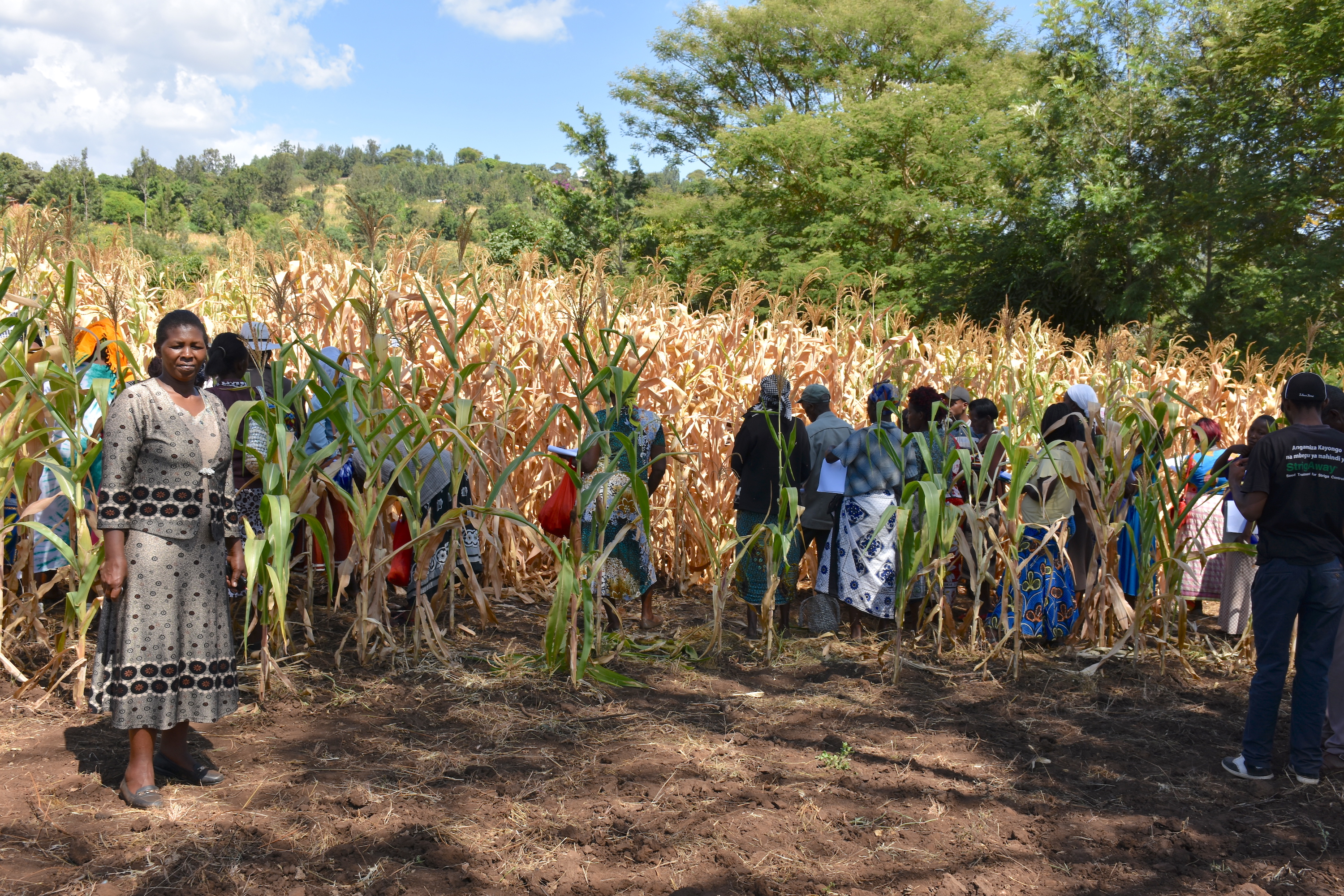
Agnes Nthambi, the farmer who hosted the demonstration plot, is very positive about her participation, as she learned about some of the ideal agronomic practices as well as the performance of new varieties. “On this trial, I learned that spacing was about two times shorter than we are generally used to. Even with the more constricted spacing, the maize has performed much better than what we are used to seeing,” she says. She also learned that fertilizer is applied at the time of planting. In her case, she normally applies fertilizer much later after germination has already occurred.
Nthambi says her family cannot afford losing both the fertilizer and the seed in case the rains fail. This time, she expects a good harvest from the one-acre farm, to supplement her family’s income.
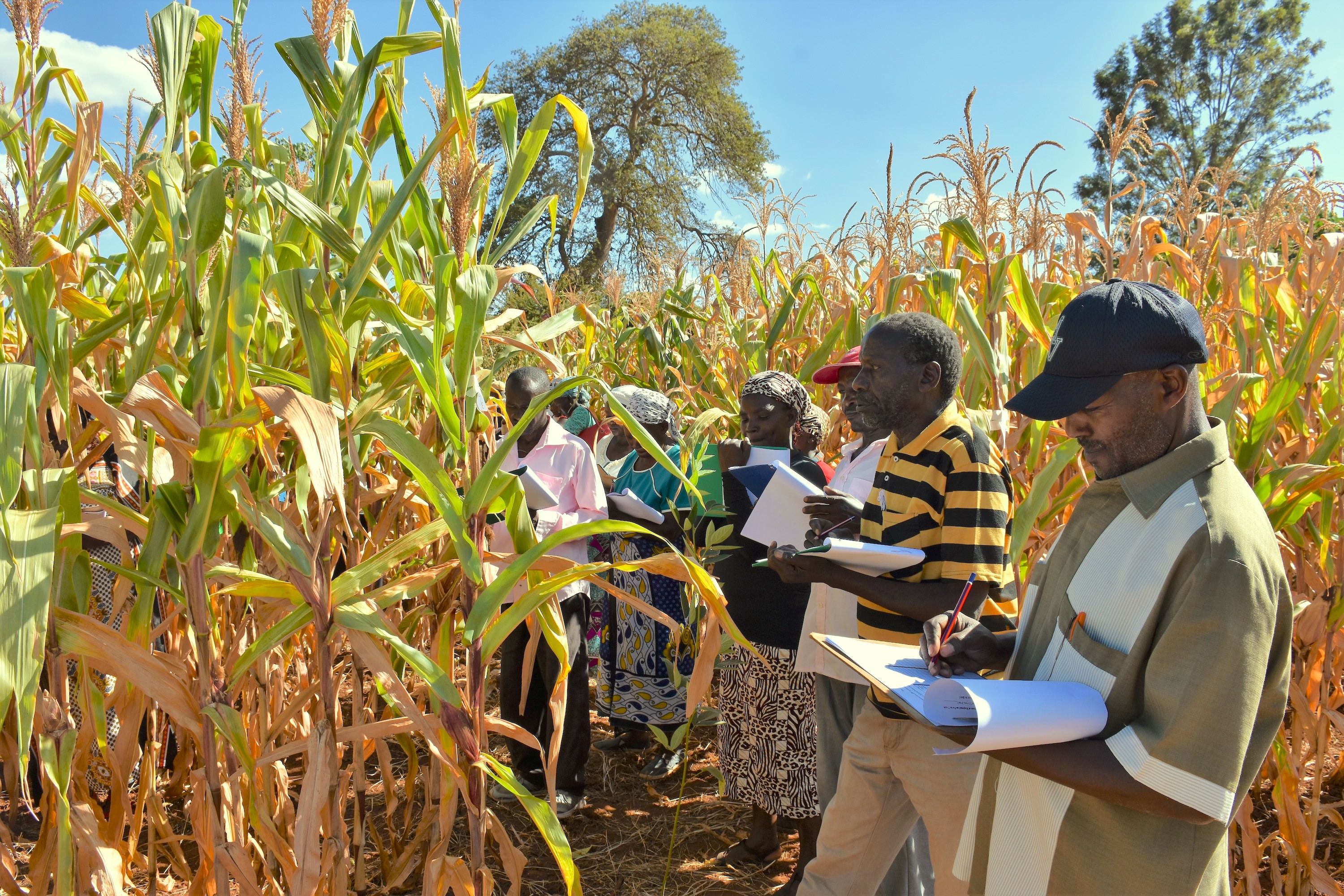
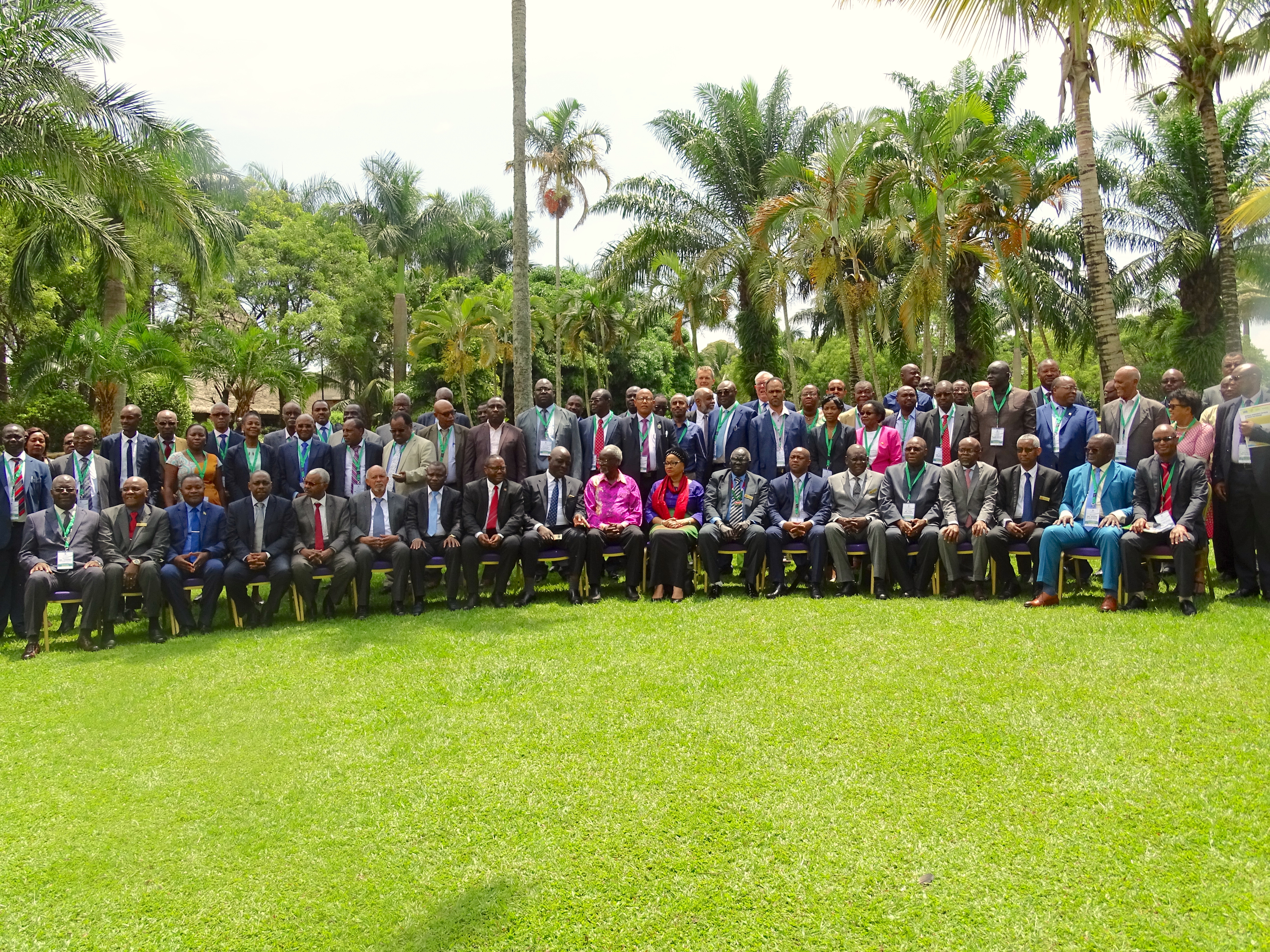
 Climate adaptation and mitigation
Climate adaptation and mitigation 